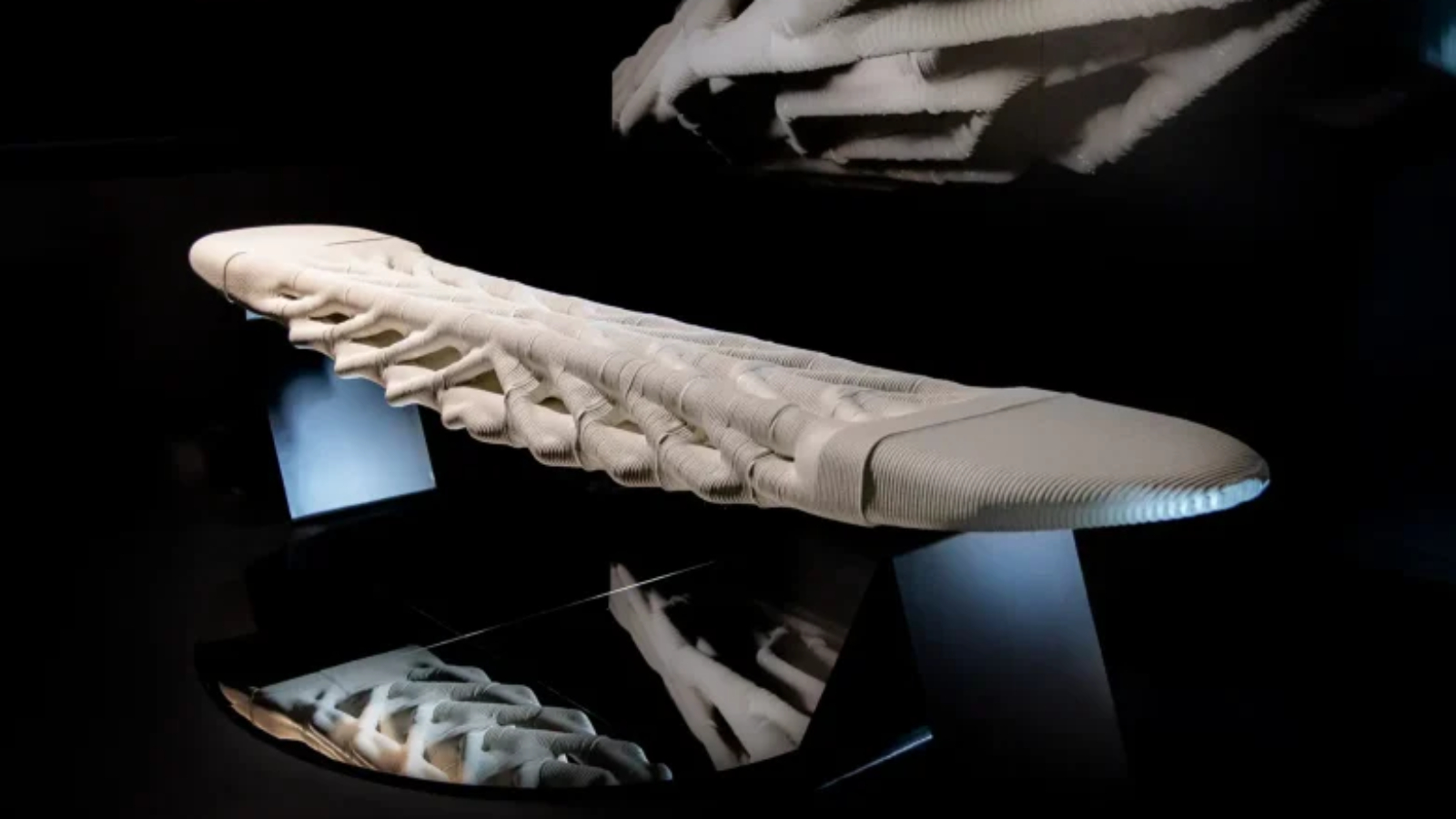Dutch robotic concrete 3D printing specialist company Vertico fabricated a scale model of the DIAMANTI bridge, a cutting-edge architectural and structural prototype showcased at the 2025 Venice Biennale as part of the Time, Space, Existence exhibition organized by the European Cultural Centre.

Adding to its uniqueness are embedded diamond-shaped anticlastic surfaces, which enhance stiffness, distribute shear loads, and reduce the volume of concrete used. This innovation leads to a lightweight and sustainable construction, minimizing embodied carbon and enabling full recyclability at the end of its life cycle. The structure spans 2.5 meters with a depth of only 26 cm, demonstrating the immense potential of digitally printed thin-shell forms.
The Venice Biennale scale model of the DIAMANTI bridge was realized through a collaborative effort between academia and industry, and brought to life by Vertico’s advanced 3D concrete printing technologies. It stands as a visionary example of sustainable and innovative construction.
The DIAMANTI Bridge project originated from a joint research initiative focused on creating a modular, prefabricated bridge system rooted in funicular design principles. It demonstrates a radical approach to reducing material use and enhancing structural performance through computational geometry and additive manufacturing.

Manufacturing on Demand
The bridge comprises modular segments, each carefully designed with anticlastic surfaces. These curved surfaces enhance the structure’s overall stability by stiffening the geometry and evenly distributing shear forces. Additionally, they provide increased surface area, which supports carbonation processes that reduce the embodied carbon in the concrete.
Vertico’s contribution centered on fabricating these segments using its robotic 3D printing system. Utilizing a sophisticated multi-component cement mix developed in collaboration with Sika, the team could create the complex geometries without traditional molds. The 2K printing system was pivotal in achieving the precision and surface quality required for the bridge’s intricate form.
The bridge segments were assembled using an innovative post-tensioning method with ungrouted steel cables. This approach enabled the dry assembly of the nine elements into a cohesive, load-bearing structure. Importantly, this strategy also makes the bridge fully demountable at the end of its service life, allowing for straightforward material separation and recycling.
One of Diamanti’s standout features is its sustainable approach to material usage. The project significantly reduces concrete consumption and minimizes waste by tailoring the 3D printed elements to align with specific load paths and integrating internal voids for stiffness. The modular nature of the bridge also supports reusability and adaptability in different contexts.

A broad network of collaborators contributed to DIAMANTI’s realization. The design and structural engineering team, led by Prof. Dr. Masoud Akbarzadeh, included researchers Amir Motavaselian, Dr. Maximilian E. Ororbia, Hua Chai, Yefan Zhi, Teng Teng, Pouria Vakhshouri, and Dr. Mathias Bernhard from the University of Pennsylvania. Sika Group in Switzerland, represented by Karolina Pajak, Leon Trousset, Severin Mueller, Mylene Bernard, and Fabrice Decroix, provided expertise in material development. Vertico handled the 3D printing, while Carsey 3D managed the physical fabrication and assembly.
AEVIA executed post-tensioning, and the Advanced Building Construction Lab at City College of New York, led by Prof. Dr. Damon Bolhassani and Dr. Fahimeh Yavartanoo, supported structural analysis. CERIB in France conducted the load testing, and material calibration was undertaken by Prof. Dr. Joseph Yost and Javier Tapia of Villanova University. Paul Kassabian and Blaise Waligun provided additional support.
You might also like:
MIT explores living 3D prints in ‘To Grow a Building’ at Venice Biennale: This project, called To Grow a Building, is very much interested in turning to natural biologies and materials in order to create built space. Made from local soil collected from Massa Lombarda, the experimental structure is 3D printed using a Crane WASP Scara, a newly developed construction 3D printer with a greater range of motion thanks to a new mechanical joint. Notably, the construction 3D printer’s enhanced capability means that it can print structures in closer proximity to existing walls or organic structures, like trees.
* This article is reprinted from 3D Printing Media Network. If you are involved in infringement, please contact us to delete it.
Author: Davide Sher


Leave A Comment